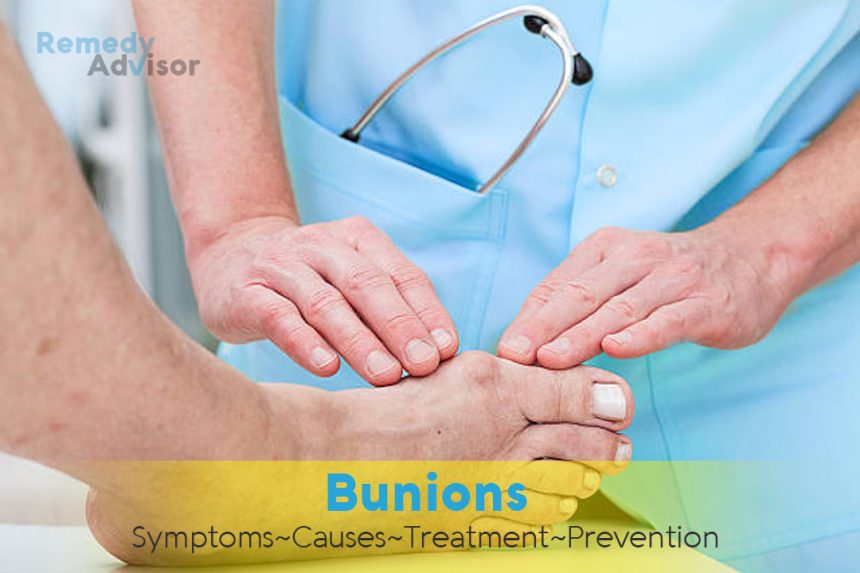What is it
A bunion occurs when the large metatarsal bone angles outward at the big-toe joint, thus forcing the toe inward; pressure over this distended joint can cause swelling and eventually a bony out- growth. In the formation of a bunion, the bursa a small, fluid-filled sac around the base of the big toe becomes inflamed, forcing the toe out of proper alignment. (Bursae, which are found around most joints, help minimize friction between tendons and muscles as they pass over bone.)
Smaller bunions bunionettes may occasionally appear on the fifth metatarsal bone and the little-toe joint.
Symptoms
- Pain over the toe joints, particularly the joint where the big toe joins the foot.
- Swelling and reddened skin over the joint of the big toe.
- Inward leaning of the big toe toward the second toe.
What causes it
Developing a bunion may be the result of an inherited tendency, and flat-footed people are more likely to get bunions than others. Poorly fitted shoes especially those with high heels and narrow toes are undoubtedly the worst bunion makers, which is why women are far more prone to bunions than men.
What if you do nothing
Not only is a bunion painful, it can also become disfiguring. Neglecting bunions over a period of years can eventually interfere with standing and walking.
Home remedies
Change shoes
If you think you are developing a bunion, switch to shoes with a low heel and ample toe room, so that the big toe is not forced against the second toe. Avoid any shoes or stockings that put pressure on the big toe joint. If practical, consider wearing sandals or other types of open shoes.
Pamper your feet
Soaking them in warm water may offer relief. Gentle massage can also help.
Prevention
Wearing well-fitting shoes is the best way to prevent bunions. Corrective pads can help as well.







